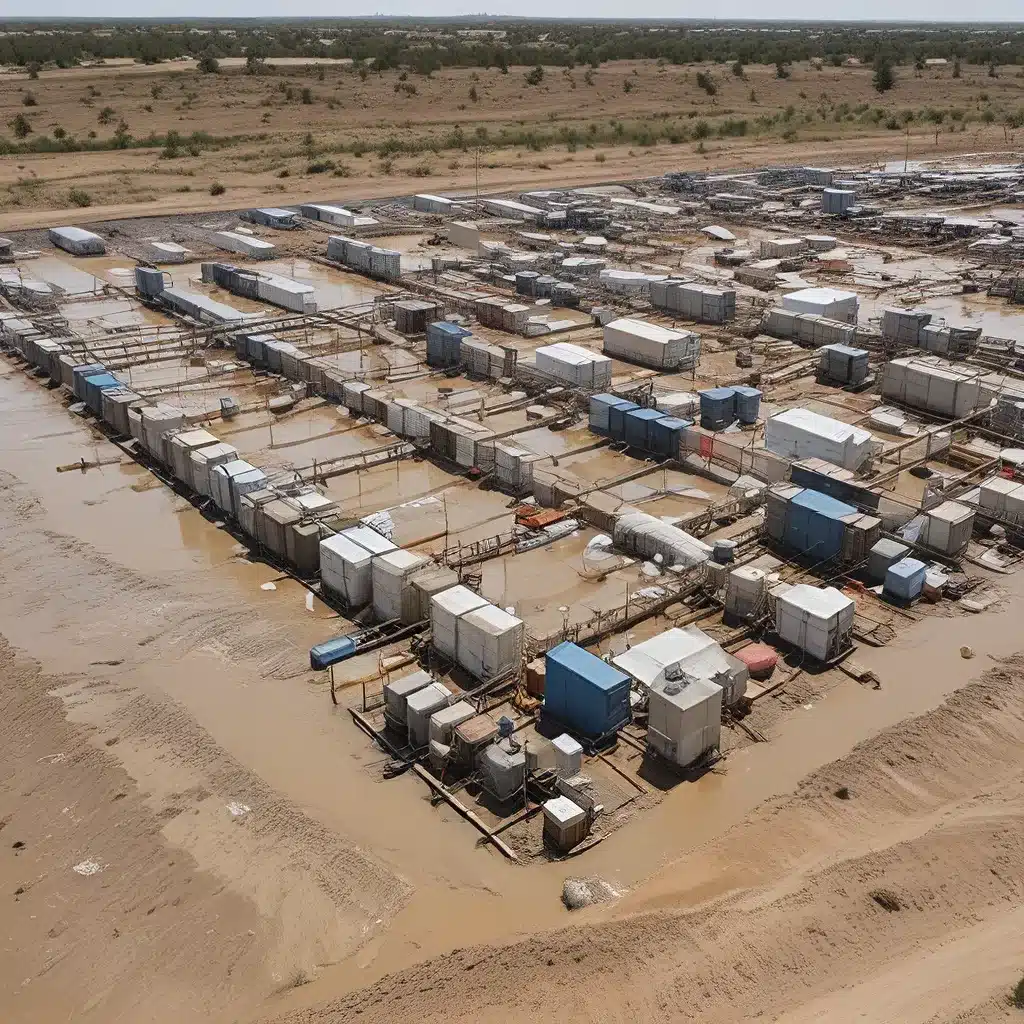
As the Chief Operating Officer at Inland Waters, Inc., a leading water treatment and environmental services company, I’ve had the privilege of witnessing firsthand the incredible resilience and adaptability of our water infrastructure. But I also know that when emergencies strike, our systems face unprecedented challenges that can strain even the most robust facilities.
In the aftermath of devastating natural disasters, like hurricanes, floods, or wildfires, maintaining clean, reliable water supplies becomes an urgent priority. And with the growing threat of climate change, we must be proactive in preparing our water treatment plants to withstand these types of events.
As Chairman Gerry Lewis of the Yakama Nation so eloquently put it, “Water is life.” That’s why I’m passionate about exploring the key strategies and innovations that can help us fortify our water treatment systems against the unexpected.
Embracing Nature-Based Solutions
One of the most exciting trends I’ve observed in the water industry is the growing momentum behind nature-based solutions. Dam removal and ecosystem restoration projects are presenting new possibilities for water management that go beyond traditional, engineered approaches.
By working with the natural environment instead of against it, we can leverage the power of wetlands, floodplains, and riparian habitats to enhance the resilience of our water treatment facilities. These natural systems can act as powerful buffers, absorbing floodwaters, filtering pollutants, and stabilizing shorelines during extreme weather events.
It’s a fascinating concept, and one that I’ve seen play out in real-world applications. Take the case of the Elwha River restoration project in Washington state. By removing two obsolete dams, the National Park Service and local tribes were able to revitalize the river’s ecosystem, allowing salmon and other wildlife to thrive once again.
The benefits of this approach go beyond just flood mitigation – it also helps to improve water quality and enhance biodiversity, creating a more holistic and sustainable solution.
Strengthening Public-Private Partnerships
Another key to building resilient water treatment systems is the power of collaboration. Public-private partnerships are essential for unlocking the funding and expertise needed to tackle complex water management challenges.
At Inland Waters, we’ve seen the tremendous impact that these collaborative efforts can have. By working closely with local governments, community organizations, and other private-sector partners, we’ve been able to implement innovative solutions that address the unique needs of each region.
For example, in the aftermath of a major hurricane, we partnered with the city of Houston to rapidly deploy mobile water treatment units and distribution centers. This allowed us to quickly restore access to clean drinking water for thousands of residents who had been cut off from the municipal supply.
The success of this project hinged on our ability to leverage the resources, knowledge, and agility of both the public and private sectors. It’s a model that I believe can be replicated in communities across the country.
Empowering Underserved Communities
As I reflect on the lessons we’ve learned from past emergencies, one of the most important insights is the critical role that underserved communities play in the overall resilience of our water infrastructure.
These communities often present some of the greatest needs, but also the greatest opportunities when it comes to building a more equitable and sustainable water future.
At Inland Waters, we’ve made it a priority to engage with these underserved populations, listening to their unique challenges and collaborating on tailored solutions. Whether it’s deploying decentralized water treatment systems in remote areas or providing specialized training and job opportunities, our goal is to empower these communities and ensure they have the resources they need to weather any storm.
It’s a holistic approach that not only strengthens the resilience of the water system as a whole, but also addresses the underlying social and economic disparities that can exacerbate the impacts of emergencies.
By investing in these communities, we’re not just building infrastructure – we’re building a more resilient and just society.
Harnessing the Power of Data and Technology
Of course, no discussion of water resilience would be complete without acknowledging the critical role of data and technology. As the water industry continues to evolve, we’re seeing a wealth of innovative tools and solutions emerge that can help us better understand, monitor, and manage our water resources.
From advanced sensor networks and real-time monitoring systems to predictive analytics and automated control systems, the possibilities are endless. And as we’ve seen during recent emergencies, these technologies can be invaluable in helping us rapidly identify and respond to system failures or contamination events.
But the true power of data and technology lies not just in the individual tools, but in how we integrate and leverage them as part of a comprehensive resilience strategy. By combining cutting-edge technologies with robust planning, training, and communication protocols, we can create a water treatment system that is agile, adaptive, and ready to withstand even the most daunting challenges.
It’s an exciting frontier, and one that I believe will be crucial in our efforts to safeguard our precious water resources for generations to come.
Unlocking the Future of Water Resilience
As I look to the future, I’m filled with a sense of both optimism and determination. The challenges we face in ensuring the resilience of our water treatment systems are significant, but the solutions are within our grasp.
By embracing nature-based approaches, strengthening public-private partnerships, empowering underserved communities, and harnessing the power of data and technology, I believe we can unlock a new era of water resilience – one that is better prepared to withstand the unexpected and safeguard this most precious of resources.
At Inland Waters, we’re committed to leading the charge on this critical front. We’ve already begun implementing many of these strategies in our own operations, and we’re eager to share our experiences and collaborate with others in the industry.
I invite you to join us on this journey towards a more resilient and sustainable water future. Together, I’m confident that we can weather any storm and ensure that “water is life” for generations to come.


